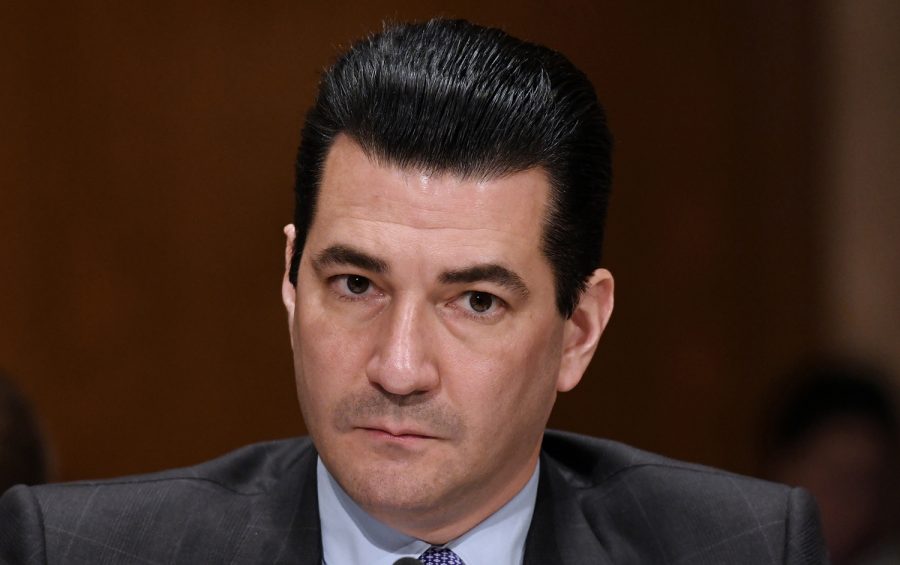FDA helps farmers address produce safety
As the regulation of produce growing in agriculture becomes more rigid, the FDA is seeking out ways to educate produce growers at the commercial and local level.
FDA Commissioner Scott Gottlieb testifies at an hearing on Capitol Hill on October 5, 2017, in Washington, D.C.
October 30, 2018
Local produce farmers need to adapt quickly to rules regulating production and harvesting of fruits and vegetables.
In a recent statement directed toward produce farmers, Food and Drug Administration Commissioner Scott Gottlieb introduced new steps for the farming community to follow when trying to comply with food-safety requirements.
Gottlieb highlighted several rules farmers must adhere to as a direct result of the Food Safety Modernization Act, which establishes science-based standards for the safe harvest of produce.
“Because of the way produce is grown, handled, and consumed … it can become contaminated with food-borne pathogens that may make consumers sick,” Gottlieb said in the statement. “Farmers understand the importance of food safety when they grow their crops.”
RELATED: Vibrations from vehicles take a toll on farmers’ backs
Iowa State University Extension food-safety educator Dan Fillius said the ultimate goal of the food-safety act and its preceding laws is to keep such pathogens as E. coli or salmonella from spreading.
“I don’t remember as much produce-related disease outbreaks growing up as I have seen in the last 15 years,” Fillius said. “The FDA sees this pattern.”
Although the FDA is responsible for enforcement of the Produce Safety Rule and the Preventive Controls Rule, Gottlieb emphasized the agency’s commitment to providing training and other support to farmers.
The FDA released two new draft guidance documents in an effort to help farmers better understand the steps and provisions they can make to follow the rules dictated by the recent food-safety law.
“Prevention is the central aim of [the act],” Gottlieb said. “Compliance by the produce industry with [the act]’s preventive controls is critical to achieving the public-health benefits envisioned by the new law.”
The ISU Extension and Outreach program works to educate and support farmers about the new food-safety laws by offering required produce trainings statewide every winter, Fillius said.
“Some of these official things are kind of dense and difficult to digest,” he said. “What we’re doing is going out and educating growers.”
Fillius, who previously worked on a Minnesota vegetable farm, emphasized that the FDA considers food-safety implementation to be a marathon, not a sprint.
“The FDA’s goal is education then regulation,” Fillius said. “Most fruit and vegetable farmers are already farming with food safety in mind. We try to meet them where they’re at.”
However, Fillius said, every farm is different and thus faces different risk factors. While a commercial farm is just as susceptible to disease as its local counterpart, there will be different requirements for each.
University of Iowa Clinical Assistant Professor Brandi Janssen, the director of the Iowa Center for Agricultural Safety and Health, said the produce industry in Iowa is growing but is still so small that many farmers are exempt from the produce rule.
“Farmers whose food sales average less than $500,000 per year are also exempt,” Janssen said. “A commercial grower is definitely going to be affected by these changes.”
Farming provides support for many other industries in the state, she said, despite farmers only making up 5 percent of the workforce.
“Agriculture is the state’s primary industry,” Janssen said. “It supports equipment manufacturing and sales, seed and chemical sales, agricultural lending and insurance, and more.”






